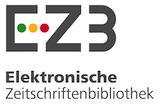Resistência do ligamento da cabeça do osso femoral em cães
DOI:
https://doi.org/10.5216/cab.v13i4.17173Palavras-chave:
ligamento da cabeça do osso femoral, resistência, cão.Resumo
Com o número crescente de animais de companhia nos lares, o aumento de sua longevidade e, em muitos casos, a forma errônea de criá-los, aumentam, concomitantemente, diversas afecções, como as patologias articulares, gerando a demanda de estudos voltados às mesmas. O objetivo deste trabalho foi determinar a capacidade máxima de resistência do ligamento da cabeça do osso femoral em cães até sua ruptura, estabelecendo correlações entre cargas exercidas (kg), deslocamento das garras de extensão (mm) e variação do tempo (s) por meio de instrumentação eletrônica que proporciona mensuração de forças e controle do deslocamento. Foram utilizados 42 cães adultos, sem raça definida, com massa corporal variando entre 4,5 e 26 kg, eutanasiados pelo Centro de Controle de Zoonoses de Petrolina (PE). Inicialmente, promoveu-se somatometria, isolou-se a pelve dos animais, rebatendo estruturas adjacentes, evidenciando a articulação coxal. As peças foram divididas em dois hemicoxais, o osso femoral, fraturado no terço médio e a cápsula articular, rebatida para visualizar o ligamento da cabeça do osso femoral, que foi submetida ao ensaio mecânico destrutivo. Dos animais estudados, 08 apresentaram resistência óssea menor que a resistência ligamentosa, gerando fratura da cabeça do osso femoral em pelo menos um antímero. As dimensões e massa corpórea do indivíduo interferiram na resistência do ligamento da cabeça do osso femoral. Nas fêmeas, o ligamento estudado apresentou resistência de 22kg ± 8,55kg no antímero direito e 21,18kg ± 8,45kg, no esquerdo. Nos machos foi de 21,76kg±9, kg no antímero direito e 23,55kg ± 9,06kg, no esquerdo. Este trabalho foi alvitrado com o propósito de gerar subsídio técnico-científico aos profissionais que atuam nas diversas áreas da medicina veterinária e engenharia médica para desenvolvimento de tecnologias na elaboração de materiais que sejam substitutivos dos tecidos naturais.PALAVRAS-CHAVE: Canis familiaris; ligamento da cabeça do osso femoral; resistência.
Downloads
Não há dados estatísticos.
Publicado
2012-12-14
Como Citar
RODRIGUES, Enaura Cristina C.; FARIA, Marcelo Domingues de; OLIVIER, Nelson Cárdenas; NETO, Joaquim Pereira. Resistência do ligamento da cabeça do osso femoral em cães. Ciência Animal Brasileira / Brazilian Animal Science, Goiânia, v. 13, n. 4, p. 525–533, 2012. DOI: 10.5216/cab.v13i4.17173. Disponível em: https://revistas.ufg.br/vet/article/view/17173. Acesso em: 21 jan. 2026.
Edição
Seção
Medicina Veterinária
Licença
Copyright (c) 2012 Ciência Animal Brasileira / Brazilian Animal Science

Este trabalho está licenciado sob uma licença Creative Commons Attribution 4.0 International License.
Autores que publicam nesta revista concordam com os seguintes termos:
- Autores mantém os direitos autorais e concedem à revista o direito de primeira publicação, com o trabalho simultaneamente licenciado sob a Licença Creative Commons Attribution que permite o compartilhamento do trabalho com reconhecimento da autoria e publicação inicial nesta revista.
- Autores têm autorização para assumir contratos adicionais separadamente, para distribuição não-exclusiva da versão do trabalho publicada nesta revista (ex.: publicar em repositório institucional ou como capítulo de livro), com reconhecimento de autoria e publicação inicial nesta revista.
- Autores têm permissão e são estimulados a publicar e distribuir seu trabalho online (ex.: em repositórios institucionais ou na sua página pessoal) a qualquer ponto antes ou durante o processo editorial, já que isso pode gerar alterações produtivas, bem como aumentar o impacto e a citação do trabalho publicado (Veja O Efeito do Acesso Livre).






























